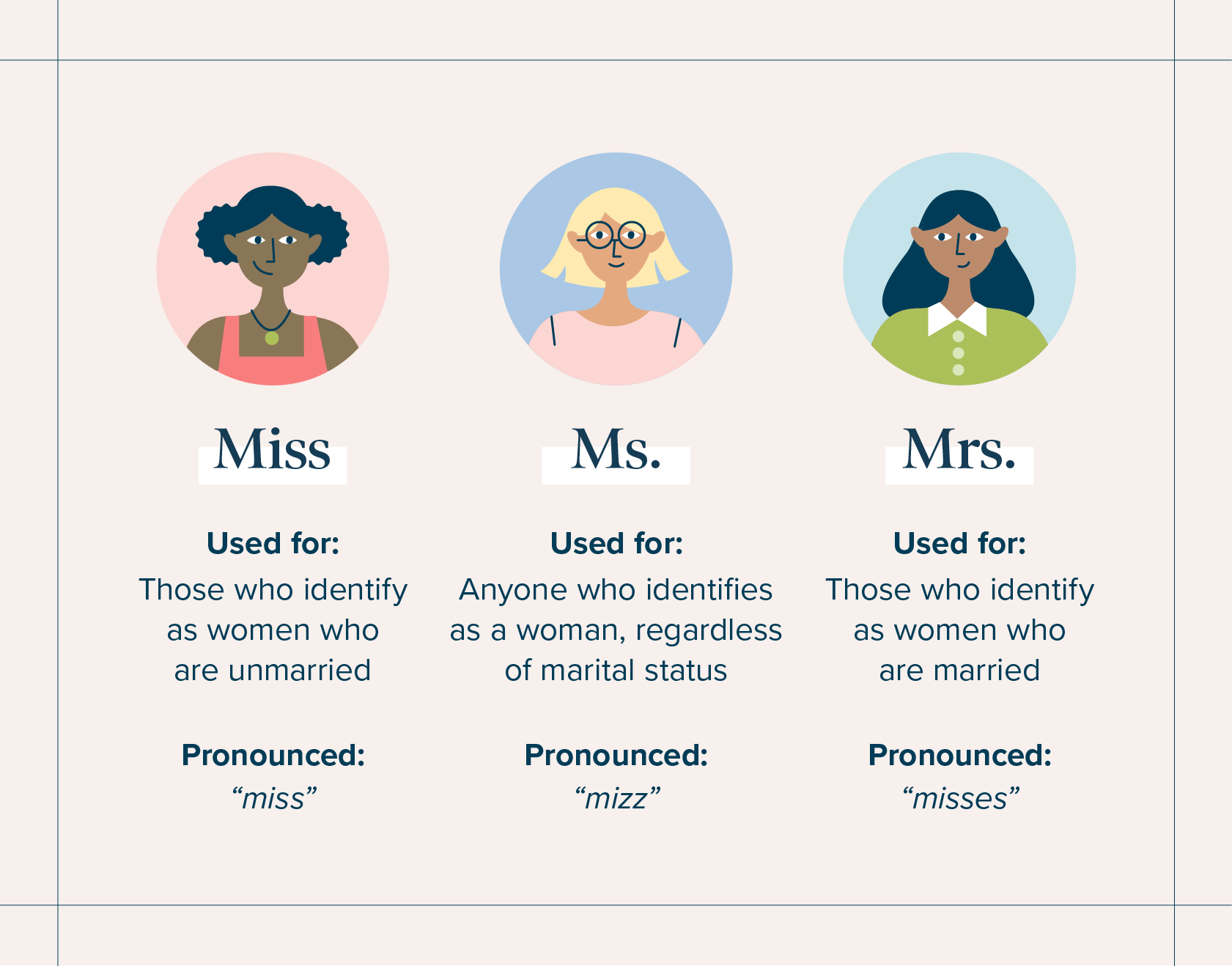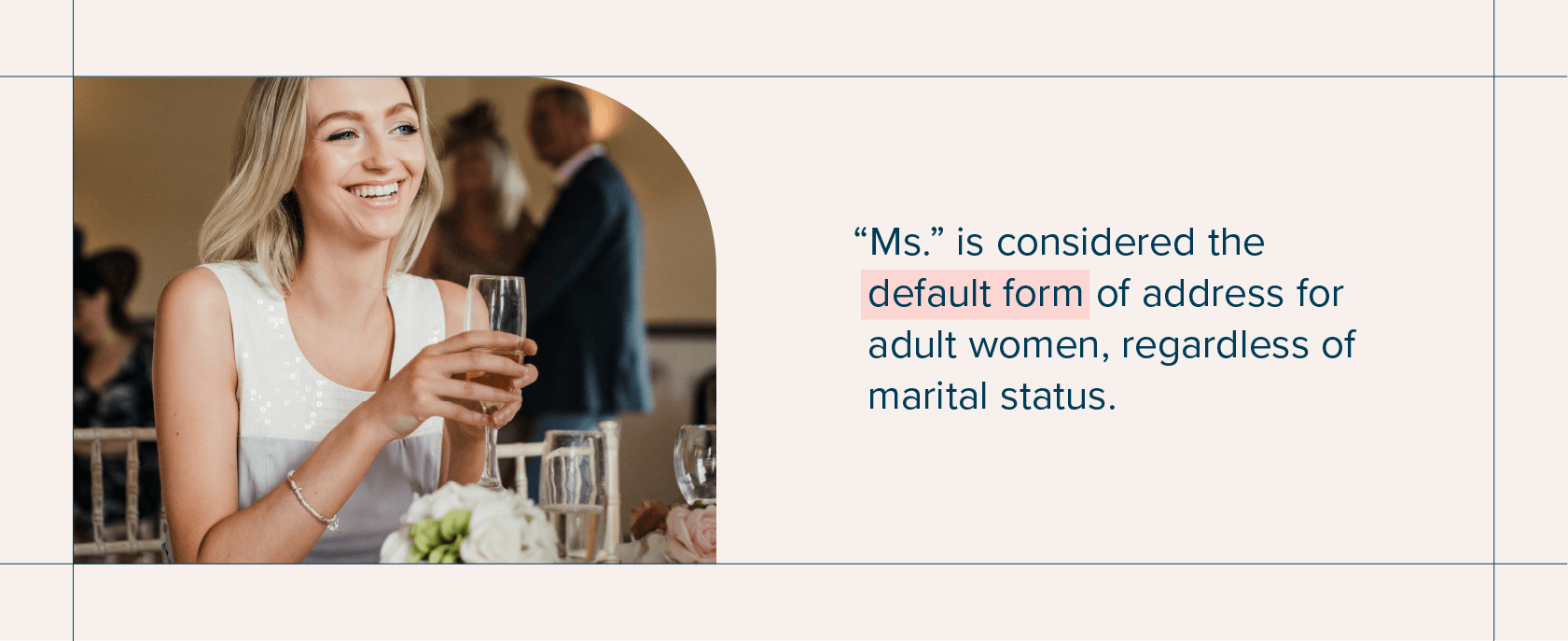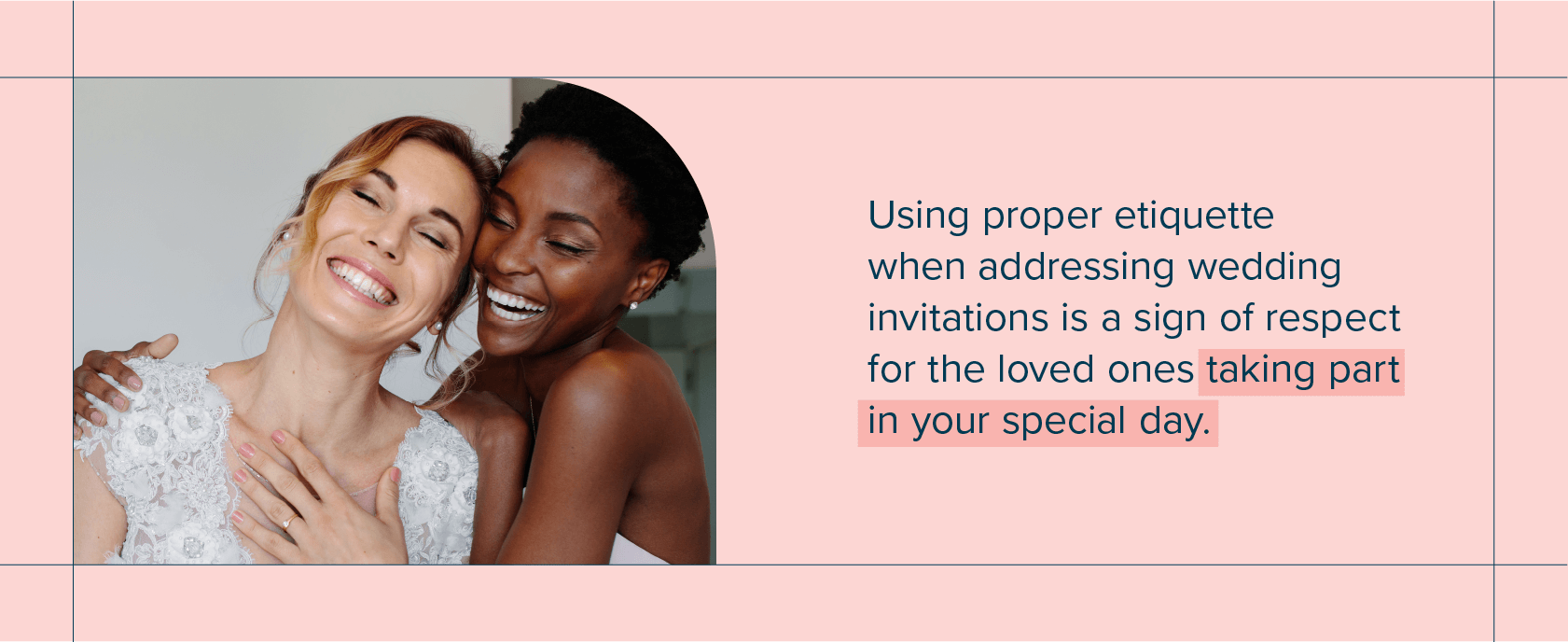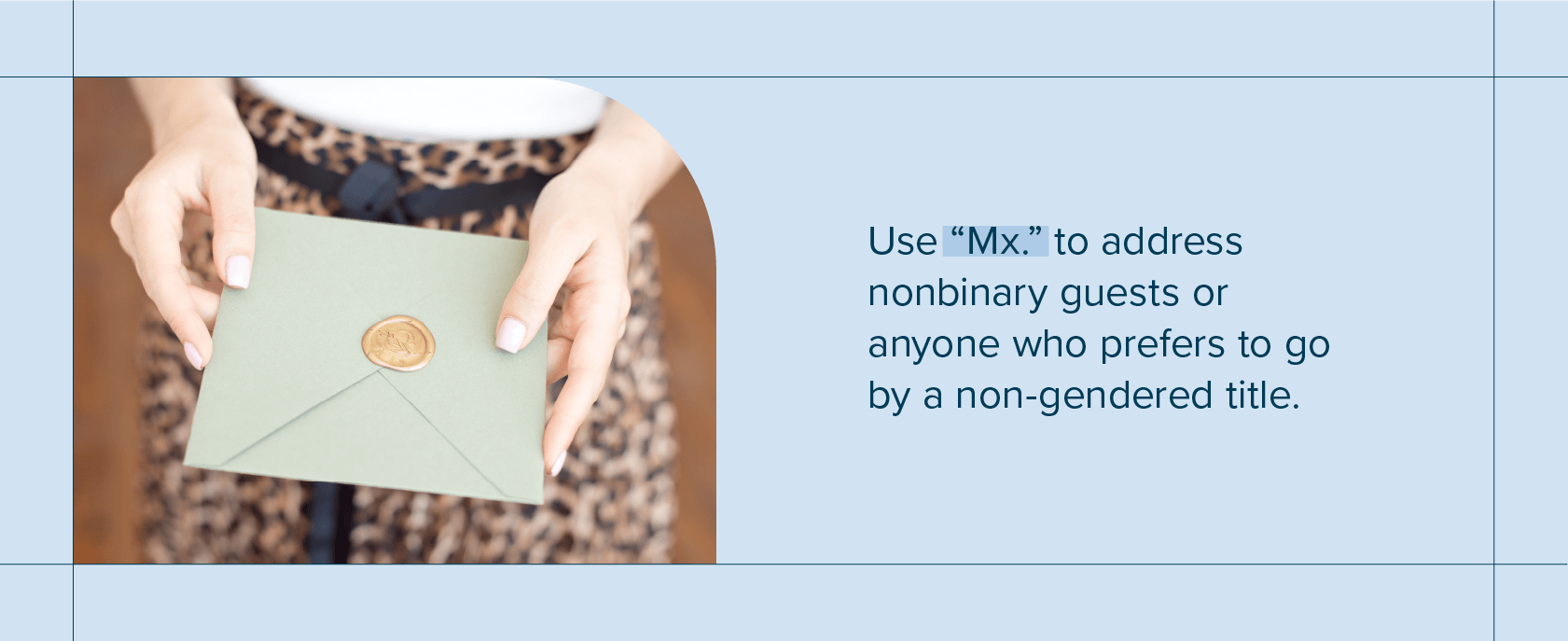- Expert advice/
- Invites & paper/
- Invitations/
- The Difference Between Ms, Mrs and Miss
- Invitations
The Difference Between Ms, Mrs and Miss
Understand the difference between Ms, Mrs and Miss. Learn when to use each title appropriately with our comprehensive guide to proper etiquette.
Last updated June 13, 2025

Whether you’re addressing wedding invitations, writing a letter, or greeting someone in person, addressing others with their preferred title is an important practice and symbol of respect. If you’re not clear on when to use “Miss,” “Ms.,” or “Mrs.,” don’t worry—learning how to properly use each title is straightforward and follows a set of clear etiquette rules.
While it’s helpful to understand the traditional use of these titles as outlined below, it’s always best to ask someone what their preferred title is if you’re unsure. Just because something is traditional doesn’t mean it’s correct for everyone’s situation!
Keep reading for everything you need to know about proper title etiquette, including how to address your wedding invitations!

- Miss: “Miss” is used to address those who identify as women under the age of 30 who are unmarried.
- Ms.: “Ms.” can be used to address anyone who identifies as a woman, regardless of marital status. It can also be used when you’re unsure of someone’s marital status.
- Mrs.: “Mrs.” is used to address those who identify as women who are married.
Miss Definition
The title “Miss” is an English honorific used to address anyone identifying as a woman who is unmarried or who retains their maiden name. While any unmarried woman can be referred to as “Miss,” the title can feel slightly juvenile for women of a certain age. In these cases, it’s best to opt for the title “Ms.,” particularly in formal settings.
Pronunciation: [mis] Plural: Misses Example sentence: Miss Mary Steinman won the debate tournament.
Ms. Definition
The title “Ms.” is an English honorific and neutral catch-all term that became popularized during the feminist wave of the 1950s, when women sought to diminish the importance of marital status in relation to their social identity. Today, it’s considered the default form of address for adult women, regardless of marital status.

Pronunciation: [mizz] Plural: Mss. or Mses Example sentence: Ms. Rodriguez will present our team awards this evening.
Mrs. Definition
The title “Mrs.” is an English honorific used before a surname to address married women. Traditionally considered as the equivalent of “Mr.,” it may also be used to address widowers, depending on their preference.
Pronunciation: [mis-iz, miz-iz] Plural: Mmes. or Mesdames Example sentence: Mrs. Langard taught me how to play piano.
Ms. vs. Mrs. vs. Miss: How to Properly Address Wedding Invitations
How you address your wedding invitations is just as important as the invitation itself. Using the proper etiquette when writing each recipient’s title isn’t just common courtesy—it’s a sign of respect for the loved ones you’re inviting to take part in your special day.

Remembering what we’ve covered about the differences between Miss, Ms., and Mrs., use these tips to address the outer envelopes with the correct title:
- Use “Ms.” to address female-identifying people over the age of 18, regardless of marital status.
- Use “Mrs.” to address married female-identifying people.
- Use “Miss” for those under the age of 18, with their name following the name of their parents if they’re also invited (Mr. and Mrs. John Smith and Miss Jane).
If you’re unsure about someone’s preferred title, simply ask their preference before addressing their invitation to avoid a social faux pas.
Including Everyone: More Titles to Know
Along with knowing the difference between “Miss,” “Ms.,” and “Mrs.,” familiarize yourself with some additional titles you may need to use depending on who you’re addressing.
- Madame: Madame is the French equivalent of “Mrs.,” and is used in highly formal circumstances to address a female-identifying person who is married, or as a sign of respect for an elder.
- Dr.: Use this title to address a doctor, unless instructed otherwise.
- Mr.: “Mr.” is used to address male-identifying people, regardless of marital status.
- Rev.: “Rev.” is used to address a pastor or priest as a sign of respect.
- Mx.: “Mx.” is a gender-neutral title used to address nonbinary guests, guests who use they/them pronouns, or for anyone who prefers to be addressed by a nongendered title.

Addressing others with the appropriate title is a simple sign of respect and a key element of proper etiquette. Most importantly, remember that not everyone will wish to be addressed by these traditional titles, even if they present as women. If you’re ever unsure of what someone's preferred title is, it’s perfectly polite to ask!
Whether addressing your wedding invitations or sharing a greeting in person, most people will appreciate your thoughtfulness when inquiring about their preferences.
- Expert advice/
- Invites & paper/
- Invitations/
- The Difference Between Ms, Mrs and Miss
Find even more wedding ideas, inspo, tips, and tricks
We’ve got wedding planning advice on everything from save the dates to wedding cakes.